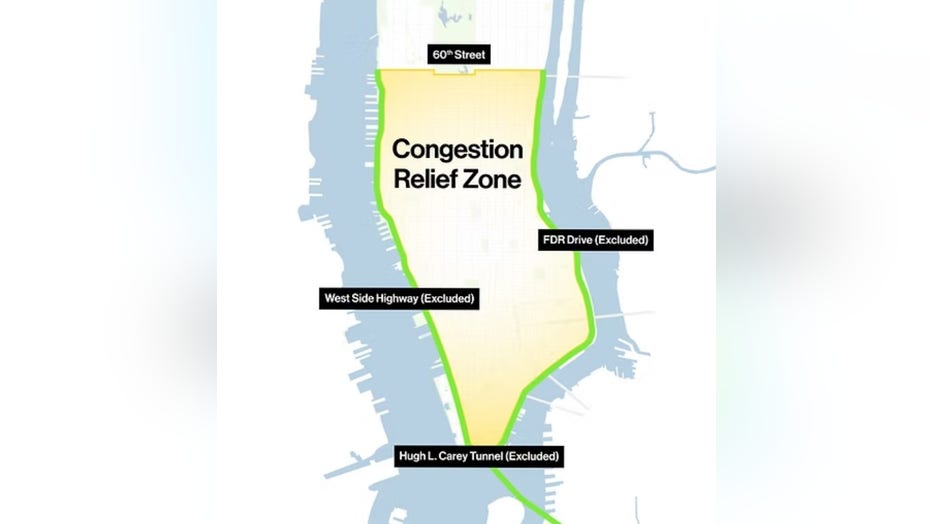"Huge success": Six months of congestion pricing

Six months of congestion pricing a 'huge success'
It has officially been six months since New York City's congestion pricing program began. FOX 5 NY's Jessica Formoso breaks down the latest report.
NEW YORK - Congestion pricing in New York City has been a "huge success," New York Governor Kathy Hochul touts after six months of the program.
Congestion pricing, half a year in
By the numbers:
Hochul and the MTA announced yesterday, July 5, that the city's congestion pricing program has successfully reduced traffic and delays throughout the region.
"The number of vehicles entering the zone is down by 11 percent since congestion pricing started." More specifically, 67,000 fewer cars enter the Congestion Relief Zone every passing day.

Gridlock has also decreased by 14 percent and traffic injuries by 15 percent in the zone – the city's Department of Transportation also released data that shows declines in traffic deaths involving pedestrians just earlier this week.
Meanwhile, transit ridership has been on the rise. In the first half of the year, the MTA reported these statistics for its various modes of transportation:
- Subway: Up by 7 percent
- Bus: Up by 12 percent
- LIRR: Up by 8 percent
- Metro-North: Up by 6 percent
- Access-A-Ride: Up by 21 percent
What is congestion pricing?
What we know:
Vehicles that enter the Manhattan zone, which are local streets and avenues at or below 60 Street – near Central Park – are charged a toll.
Most vehicles pay $9 to enter the congestion zone during peak period, but motorcycles are half the price; trucks can be charged $14.40 to $21.60 during peak hours, depending on size.
Peak period applies from 5 a.m. to 9 p.m. on weekdays and from 9 a.m. to 9 p.m. on weekends.
The Source: This article includes information from a press release from New York Governor Kathy Hochul, as well as data and reports released by the MTA and New York City's Department of Transportation.

